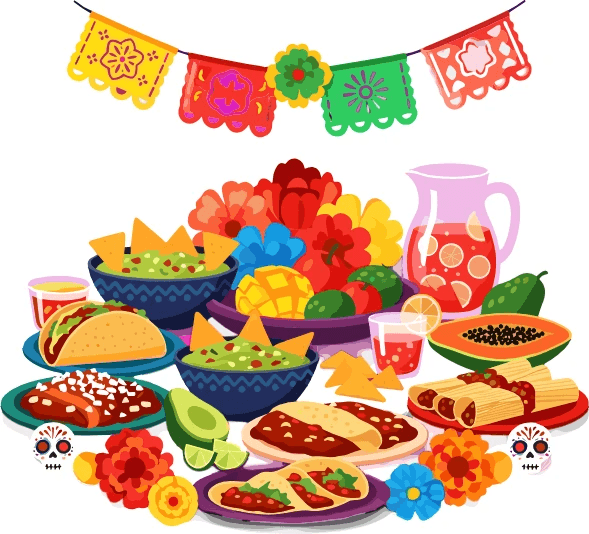Ever bite into something so savory, so mouthwateringly rich, that you can’t quite describe it—but you know you want more? That sensation has a name: umami.
It’s the flavor you’ve been chasing without even knowing it. And once you recognize it, you’ll start seeing (and tasting) it everywhere.
At Tsubi Soup, umami isn't just a taste—it's fundamental to our philosophy.
We specialize in bringing this deep, satisfying flavor to your table through clean, plant-based Japanese miso soups that are as convenient as they are crave-worthy. With freeze-dried ingredients like organic miso, shiitake mushrooms, seaweed, and tofu, every bowl of Tsubi Soup delivers that soul-hugging umami hit without additives, preservatives, or artificial shortcuts.
So if you're curious why your taste buds light up with a certain kind of savory joy—or why our miso soups feel more nourishing than your average bowl—it's time to get acquainted with the fifth taste.
What exactly is umami?
Umami is often called the "fifth taste," joining sweet, salty, sour, and bitter.
The word comes from Japanese: umai (delicious) and mi (taste). It was first identified by Japanese scientist Kikunae Ikeda in 1908, who linked it to glutamate, an amino acid found in many protein-rich foods.
Unlike the punch of salt or the brightness of citrus, umami is deep. It lingers. It’s the taste of broth, slow-cooked tomatoes, aged cheese, and yes, miso soup. It’s what makes food feel round and complete.
Think of umami as the invisible backbone that brings harmony to your favorite dishes.
The Science of Umami Craving

Your tongue has specific umami receptors. When glutamates or certain nucleotides hit them, your brain lights up with pleasure signals. It’s not just a flavor; it’s a physiological response.
Evolutionarily, this made sense: umami signaled protein and nutrition.
Why Umami Feels so Satisfying
The neurological response helps explain why umami-rich foods often feel so comforting. When your taste buds detect umami, they send signals to your brain indicating a nutrient-dense meal. That's why a bowl of ramen or a rich mushroom risotto can be so incredibly satisfying—your body recognizes it as fuel.
And here’s the kicker: umami enhances other flavors, which means you can reduce salt or fat without sacrificing satisfaction.
That’s a big deal if you care about clean eating without compromising taste. It also explains why chefs use umami boosters like anchovy paste or kombu dashi in even the simplest recipes.
Where To Find Umami (spoiler: it’s everywhere)
Some of the most crave-worthy ingredients are packed with natural umami:
- Tomatoes (especially sun-dried or roasted)
- Mushrooms (shiitake, porcini)
- Aged cheeses (like Parmesan)
- Seaweed (kombu is a powerhouse)
- Fermented foods (soy sauce, miso, kimchi)
- Animal proteins (cured meats, slow-cooked broths)
The Power of Layering Flavors
The key isn't just having one umami ingredient. It’s about layering.
Traditional cuisines, especially Japanese, have perfected the art of combining multiple umami-rich foods to create complexity. A simple miso soup, for instance, might contain miso paste, kombu, tofu, and shiitake mushrooms—each adding its own pleasant savory taste.
Umami Across Cultures

While umami is rooted in Japanese culinary science, its influence spans the globe. Italian cuisine leans on tomatoes, cheese, and cured meats. Korean dishes use fermented soybean pastes and gochujang. Thai curries balance fish sauce and shrimp paste. Even classic American dishes like burgers and barbecue use aged beef, cheese, and grilled vegetables to achieve that umami hit.
Building Global Flavor Awareness
Recognizing umami in global cuisine helps us better appreciate flavor structure—and makes us better cooks. Once you start thinking in terms of umami, you can upgrade everything from sauces to soups to plant-based meals with just a few thoughtful additions.
Tsubi Soup and The Art of Umami
At Tsubi Soup, we take umami seriously. Our freeze-dried miso soups are made with real ingredients like organic miso, tofu, seaweed, and mushrooms—each one contributing to a deeply satisfying umami experience. No preservatives, no MSG, no shortcuts. Just pure, plant-based comfort.
Our soups are crafted to preserve the essence of traditional Japanese dashi without the need for preparation time. Through freeze-drying, we retain the full depth of flavor and nutrients in every bowl. It's authentic umami, conveniently delivered to your kitchen.
We also offer bold flavor twists like our Shichimi spice blends, which add heat and complexity while complementing the soup’s core pleasant savory taste. Whether you're enjoying a light lunch or a cozy evening meal, every slurp is layered with taste and intention.
Why Umami Matters (especially now)
For health-conscious food lovers, umami is a game-changer. It allows for flavor depth without relying on sugar or excessive sodium. It encourages mindful, joyful eating. And it connects you to a culinary tradition that respects both taste and wellness.
In a world full of overprocessed snacks and flavor fatigue, umami brings us back to food that nourishes and satisfies. It gives us permission to crave, to savor, and to eat in tune with our senses.
Once you know what to look for, you’ll find yourself reaching for umami-rich ingredients not just because they’re good for you—but because they’re downright delicious.
Umami FAQs
Is umami the same as MSG?
Not exactly. MSG (monosodium glutamate) is a synthetic form of glutamate, the compound responsible for umami. Natural umami comes from whole foods like tomatoes, miso, and mushrooms. Tsubi Soup uses only natural ingredients—no added MSG.
Can vegans enjoy umami?
Absolutely. Many plant-based foods are rich in umami, especially fermented or aged ones. Tsubi Soup's miso blends are entirely vegan and loaded with umami. Seaweed and mushrooms are also excellent sources.
Does umami mean salty taste?
No. While they can overlap in savory dishes, umami is distinct from saltiness. It’s more about depth and savoriness than pure salinity. A dish can be low in sodium and still be high in umami.
Is umami healthy?
Yes—especially when sourced from natural, whole-food ingredients. It can make meals more satisfying, helping reduce overreliance on fat, salt, or sugar. Many umami-rich foods are also high in essential nutrients.
How can I add more umami to my meals?
Use ingredients like miso paste, soy sauce, mushrooms, sun-dried tomatoes, or nutritional yeast. A dash of fermented flavor goes a long way. Try topping a grain bowl with a spoonful of miso tahini or stirring dashi into your soup base.
Ready to taste the fifth flavor for yourself? Try Tsubi’s miso soup and discover how umami turns ordinary into unforgettable.

